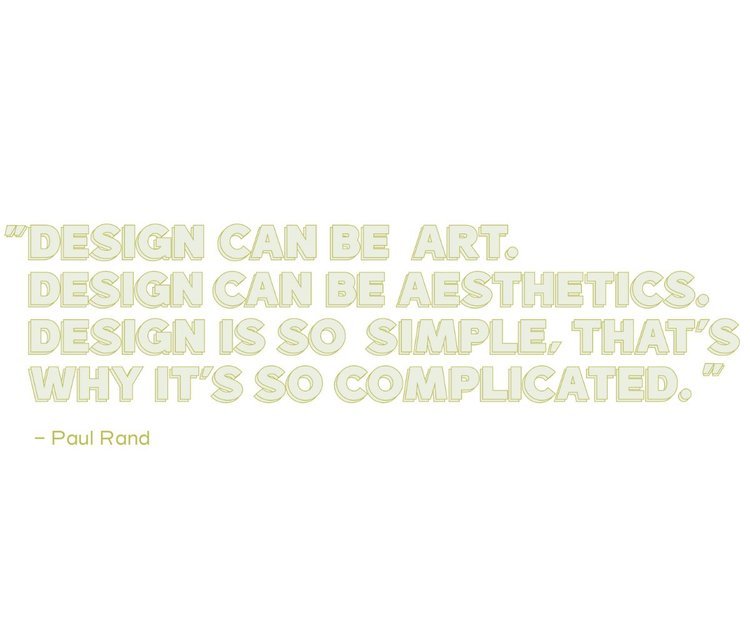A Basic Brand Design Checklist for Non-Designers
More and more people have become interested in entrepreneurship as an alternative to the toxic work environments, stagnant pay, and threat of layoffs that can come with traditional jobs. *Steps up on soapbox talking about how the world we live in is so f*cked.*
We’re an adaptable bunch, us entrepreneurs. We embrace the freedom of self-determined work and adopt a DIY attitude toward business. Sometimes, we have to become self-taught experts in a new area. It’s as liberating as it is challenging.
When you’re constantly Googling how to do things, paying for resources that you may or may not end up using, and feeling the heated pressure of doing ~all the things~ in order to get by, finding guidance that is valuable and practical is a huge relief.
Entrepreneurship is an evolving discipline, and there’s a lot I know nothing about. A lot, LOL. BUT I do have a lot of experience with working with brands.
From fresh-out-the-gate to multi-million-dollar businesses, political campaigns to canned cocktails, spiritual coaches to horse ranches, the spectrum is vast, and I’ve picked up on some common questions and topics that consistently pop up.
This checklist is for the baddies launching a new business, dipping their toes in the side hustle game, wanting to add some visuals to hard work, or curious about what all should be considered with a basic brand design toolbox.
Check it:
BASIC BRAND DESIGN CHECKLIST
Wordmark Logo | This is your name or the name of your business in a stylized font. Keep these things in mind:
Legibility of the font, ask yourself: is this hard to read?
How it reads when it’s really small (like on a phone screen)
Associations with the chosen font (like calligraphic fonts feel more light and playful than a narrow sans serif font)
If the name has more than one word, it would be beneficial to have a version that is horizontal and a version that has the words stacked
Make sure you have the appropriate licenses and permissions to use your selected font
Symbol Logo | A representation of your brand in a (generally) simple design
There are different types of symbol logos. For the sake of simplicity and getting started, aim to create one symbol logo for your brand.
Types of symbol logos: monogram, pictorial, emblem, and abstract.
Color Palette | Selecting brand colors is not as easy as it may seem, but that doesn’t mean that it has to be hard! Keep these things in mind:
There are tools you can use to help you select your palette: Coolers is a great, free tool. Pinterest is always a great resource for finding inspiration.
Don’t select a handful of colors because they’re your favorite or just because you like them. Well, you can, BUT your favorite colors might not reflect the type of brand you’re going for. If you’re a freelance photographer, for example, and you like doing nature photography, having a color palette with all neon colors does not evoke a visual connection between the brand and the type of work you do. A palette that has more neutral tones and maybe a pop of brighter colors would have a more impactful presence.
Try your best to stick to your brand colors, consistency is a foundational element to building a recognizable brand.
Brand Fonts | Brand fonts are separate from your wordmark font (they can be the same but having complimentary fonts adds more visual interest). 2-4 different fonts is an average amount.
Purchase the appropriate licenses as-needed.
Free fonts are always available out there too! Google Fonts is a great resource.
Check the legibility of the fonts: print them out with different sizes on a sheet of paper to see how it reads at different scales.
Throw in a little bit of variation! Try pairing sans serif fonts with slab serifs, or calligraphic with serif fonts, etc.
Website | Having a website is not vital to running a business, however I do recommend it, even if it’s a very simple site. Having a virtual home base for your business information can help get leads, provide easily shared links, have accessibility to people who are not on social media, etc.
Squarespace and Wix are the two leading website builders for non-developers/designers, in my opinion. They’re very affordable and the user experience is great.
General Design Vibe | This is really important and oftentimes forgotten about. I’ve seen many instances where a brand/individual uses templates that feel completely different from each other (despite having the same colors and/or fonts). If you’re going for a minimal approach, stick to producing minimal-style graphics. Avoid selecting templates just because you like them in the moment. Ask yourself: does this design feel on-brand? Is there a set of design templates that all feel like they’re representing the same business?
Design Tools | I went to school for graphic design and I still am learning the ways of the Adobe Suite! Unless you want to dedicate your time to learning the platform, you can utilize free or premium design tools that are extremely easy to use. I recommend Canva to my (non-designer) clients who want to do some design production themselves. I’ve never used it, but Desygner is another option if you don’t like Canva.
Starting a business is no easy task. And neither is creating a visual brand to represent your work. Go easy on yourself and play around with your options!
If you would prefer to have a professional designer and brand strategist help you reach your goals, you’re in the right place.

